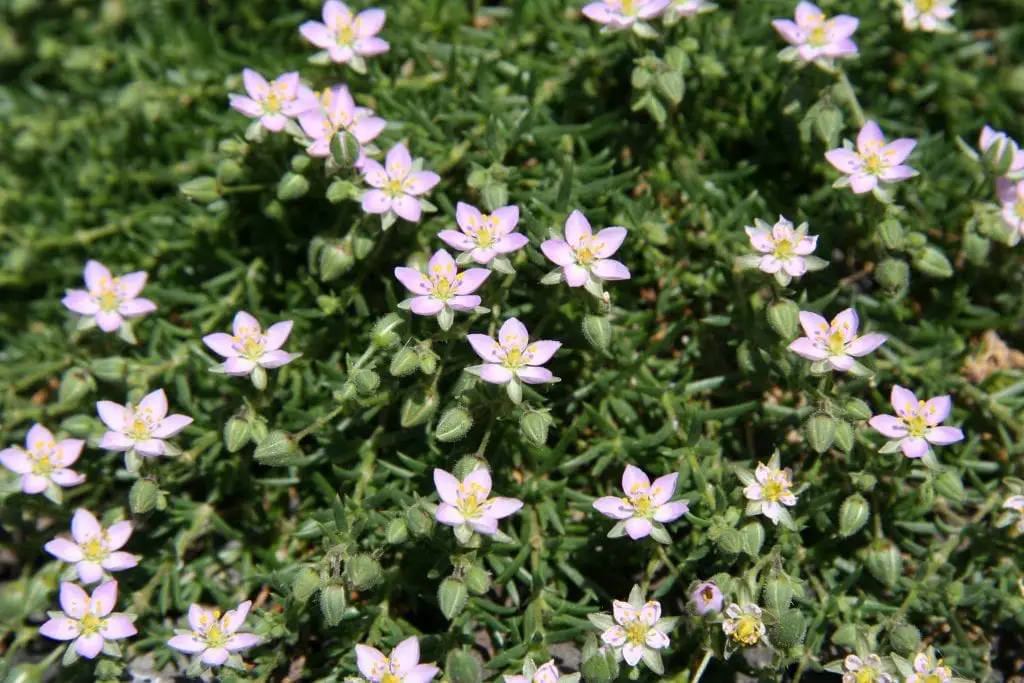
Image – Wikimedia Commons / Michael Wolf
The plant with a scientific name Frankenia laevis It is one of the best alternatives to grass for those areas where rainfall is rather scarce. It covers the ground quickly but without being invasive, and it also produces very pretty flowers.
As if that were not enough, it resists cold and frost of some consideration, so go ahead and take a look at it 🙂.
Origin and characteristics
The Frankenia laevisPopularly known as sea heather, sea heather, sea thyme or sapera grass, it is a groundcover creeping plant native to the coastline of the temperate regions of Spain, Portugal, France, Great Britain and Italy. Grows to a maximum height of ten centimeterswith stems from which greyish-green leaves sprout, and perennial. The flowers are small and pink.
Its growth rate is fastand as it supports the footprints and does not need mowing, it is undoubtedly an ideal option for those who want to have a low maintenance green carpet.
What are cares?

Image – Wikimedia Commons / Ghislain1
If you want to have sea thyme in your garden, provide it with the following cares:
- Location: it must be directly exposed to the sun.
- Earth: grows in all types of soils, even those that are vulnerable to erosion.
- Irrigation: it resists drought, but it is advisable to water at least twice a week during the summer and every 4-5 days the rest of the year.
- Subscriber: it is not necessary, although if it is paid every so often (once a month, for example) with ecological fertilizers it will grow better.
- Multiplication: by seeds and cuttings in spring.
- Plagues and diseases: does not have.
- Rusticity: it resists frosts down to -7ºC, although you have to know at these temperatures it is normal for the leaves to turn reddish (not worrying 🙂).
What did you think of the sapera herb? Have you heard of this extraordinary creeping plant?

